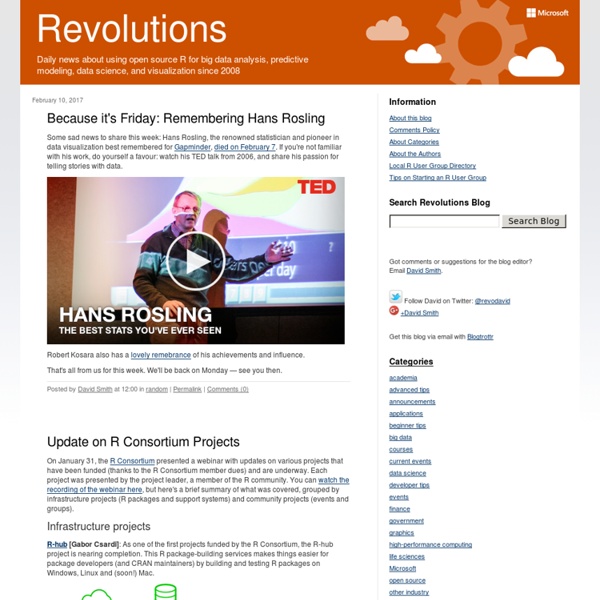



Expressions idiomatiques-anglais Apprendre l'anglais > Cours & exercices d'anglais > Exercices d'anglais > test d'anglais n°93758 : Expressions idiomatiques - cours Pour parler anglais naturellement, il est essentiel de connaître quelques expressions idiomatiques. En voici une liste. Pour chacune des expressions, on donnera la traduction française et la traduction littérale (= la traduction qu'on obtient en traduisant chaque mot l'un après l'autre). Après avoir appris ces 10 expressions, faites l'exercice suivant. Exercice : Compléter l'expression idiomatique correspondant à la phrase donnée. Merci de votre participation ! Essayez d'abord de faire le test sans les explications grises. Fin de l'exercice d'anglais "Expressions idiomatiques - cours"Un exercice d'anglais gratuit pour apprendre l'anglais.
Civil Statistician | Stats, datavis, edu, brains, etc. Python: le module Shapely, géométries, prédicats spatiaux, analyse spatiale, matrices de Clementini (DE-9IM), traitements de shapefiles ou autres, et représentation avec matplotlib Parmi les normes de l'Open Geospatial Consortium, ou OGC figure Simple Features. Celle-ci définit le modèle géométrique à utiliser pour les entités vectorielles SIG ( Simple Feature Access - Part 1: Common Architecture: www.opengeospatial.org/standards/sfa, Simple Feature Access - Part 2: SQL Option: www.opengeospatial.org/standards/sfs) sous la forme de: un modèle de géométrie 2D pour les objets vectoriels (points, lignes, polygones...) Quelques exemples de représentation de géométries OGC au format WKT (sans SRID):POINT (180 270)LINESTRING (250 370, 180 330, 180 190)POLYGON ((180 370, 130 310, 160 230, 160 230, 250 260, 180 370))LINEARRING (180 370, 130 310, 160 230, 160 230, 250 260, 180 370) Il est aussi nécessaire de bien comprendre les concepts d'intérieur, de limite et d'extérieur d'un objet géométrique, ainsi que sa dimension: Les objets géométriques (points, lignes, polygones, multipoints, multilignes, multipolygones, multigéométriques) from shapely.geometry import ... wkt polygones
Infochimps Blog Help Changes from VPython 5 VPython 6 will run almost all old VPython programs correctly without change The following details about changes may be important in a few unusual cases. An animation loop must contain a rate or sleep statement, which limits the number of loop iterations per second as before but also when appropriate (about 30 times per second) updates the 3D scene and handles mouse and keyboard events. You should use the new function sleep rather than time.sleep. You must import visual or vis before importing graph or controls or filedialog, which most users have always done anyway. Be sure to read what's new in the latest version of VPython 6. Rotate and zoom To rotate the camera around the scene, drag with the right button down, or with the Ctrl key down. How to learn about VPython VPython is the Python programming language plus a 3D graphics module called "Visual" originated by David Scherer in 2000. For a quick introduction, see these YouTube videos: from visual import *
Simply Statistics Interview with Tom Louis - New Chief Scientist at the Census Bureau Tom Louis Tom Louis is a professor of Biostatistics at Johns Hopkins and will be joining the Census Bureau through an interagency personnel agreement as the new associate director for research and methodology and chief scientist. Tom has an impressive history of accomplishment in developing statistical methods for everything from environmental science to genomics. We talked to Tom about his new role at the Census, how it relates to his impressive research career, and how young statisticians can get involved in the statistical work at the Census. SS: How did you end up being invited to lead the research branch of the Census? As background, components of my research, especially Bayesian methods, is Census-relevant. Rod and I noted that it’s interesting and possibly not coincidental that with my appointment the first two associate directors are both former chairs of Biostatistics departments.
2. BIBLIO/WEBO-GRAPHIE — Road Book Python v1.3.5 La communauté des programmeurs Python, s’est développée très rapidement et inclue de nombreux scientifiques (biologie, mécanique, physique, chimie, ...). Elle a mis en ligne une documentation abondante, et souvent une simple requête à l’aide d’un moteur de recherche permet de trouver les informations nécessaires et de nombreux exemples d’utilisations (graphismes, accès réseau, simulations, résolutions d’équations, traitements du signal, ...) ainsi que des applications et librairies de calcul spécifiques, diffusées librement. Voir aussi la page du cours Python de Patrick Pollet (mais certains liens sont manquants) sur le serveur du Premier Cycle INSA: suivre pédagogie -> informatique -> anciens cours -> programmation avec Python (FAS 2A 2005/2006). Voici quelques liens pointant vers des documents de bonne qualité, avec des versions en ligne et/ou des versions téléchargeables (en pdf et/ou html): Enfin quelques sites utiles pour découvrir les aspects graphiques:
Our Writing – Juice Analytics - Your data is meant for action. Much of what makes a great product manager is empathy and a desire to serve others. Tulsi demonstrates these qualities better than most I’ve come across. As you will see below, her passion for design as part of product management is only surpassed by that for her customers, products and causes. Even after years of product management experience at several companies, I still get frustrated when folks frequently say “So, you are a Project Manager”. With this in mind, let’s begin this discussion by describing what a Product Manager is. As Catherine Shyu, Product Manager at Send Grid puts so nicely: “Much of a Product Manager’s responsibility is to juggle multiple streams of conversation and move them towards closure.” Successful disruptive and innovative brands like Basecamp, Airbnb, Fab, and many others have proven that features alone don’t improve the sales. In the words of Gary Tan “The ideal startup team consists of: a designer, a hustler, and a hacker.”